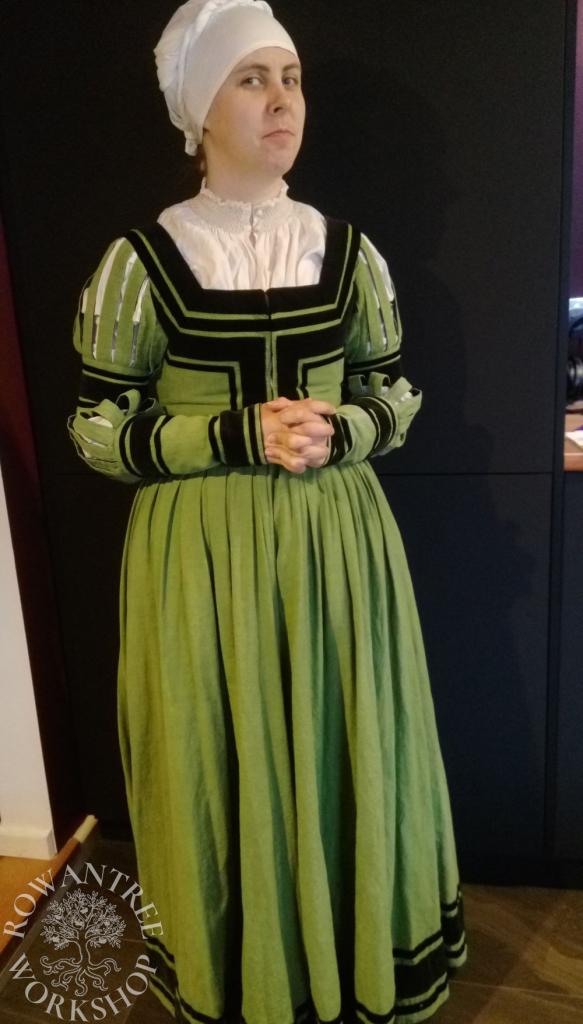A middle class German gown from the early 16th century, in green linen with multiple black velvet guards.
In 1996, I went to Europe and visited many art galleries and museums across Germany and Austria. In the days before the Web was wide-spread and digitised images were still a future dream, this was quite amazing. I saw paintings, stained glass and many other images that I had never seen in books.
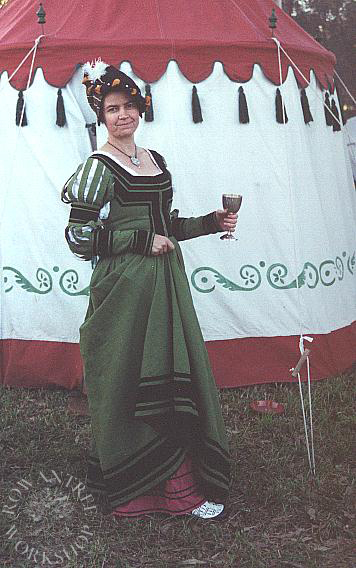
Returning from this trip, I resolved to replace and upgrade my 16th century German middle class wardrobe, based on art from the time – not on redrawn images from costume books. This would be my first Rock with a central front opening (I made my second in red wool at the same time).
Research and Design
This gown was inspired by a stained glass window I photographed in the Germanisches National Museum Nuremberg. I loved the colour, the cut , the decoration and the headwear – and decided to make the lot.
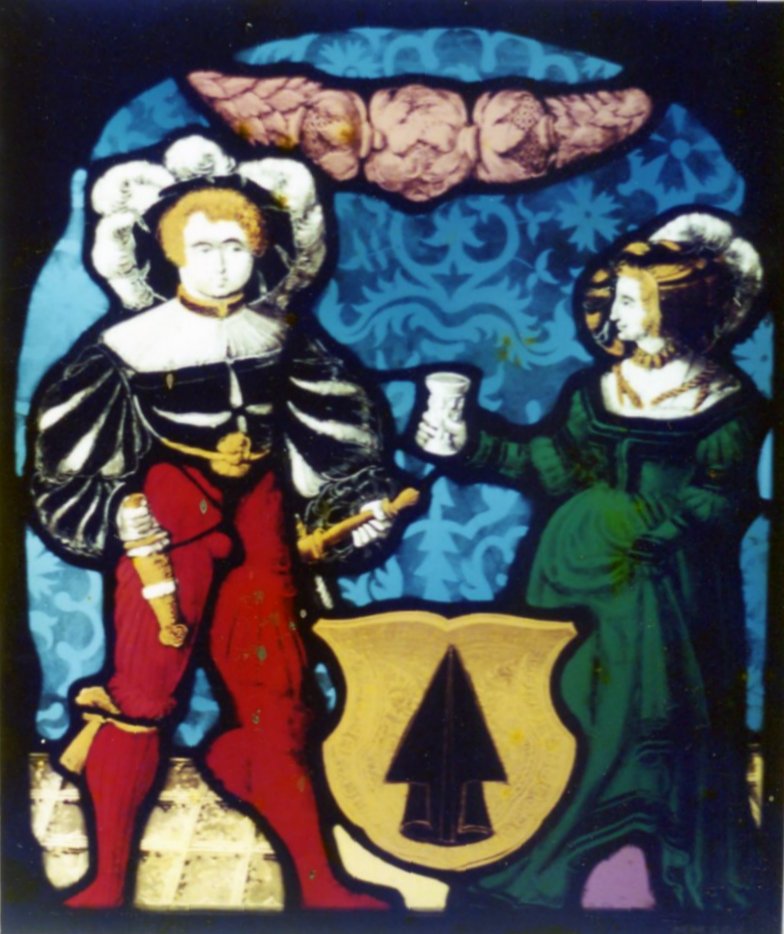
Photo: Robyn Spencer

The window shows a woman wearing a front-opening bodice decorated with large and small black guards on the neck edge and front. There is a gathered skirt with larger scale banding, and sleeves with sections of slashing and matching decoration.
She is wearing a low-necked Hemd (smock) which follows the neckline, and a plain pink underdress. I liked the pink, but wanted a little decoration on the underdress, so I copied the simple lines from the Holbein drawing.
Construction
I patterned the bodice and discovered that although the front looks as if it is cut straight, it actually curves to follow the bustline. The sleeves are made in 4 segments – strips between flat sections. I patterned the sleevehead so I could shape the strips, but did not bother for the elbow strips.
I found a lovely leaf green linen, but wanted it darker to match the picture, so I overdyed it using commercial green dye. I made the skirt as a half circle, out of 4 drops of linen (cut as segments of an arc), saving the cabbage for the sleeves.
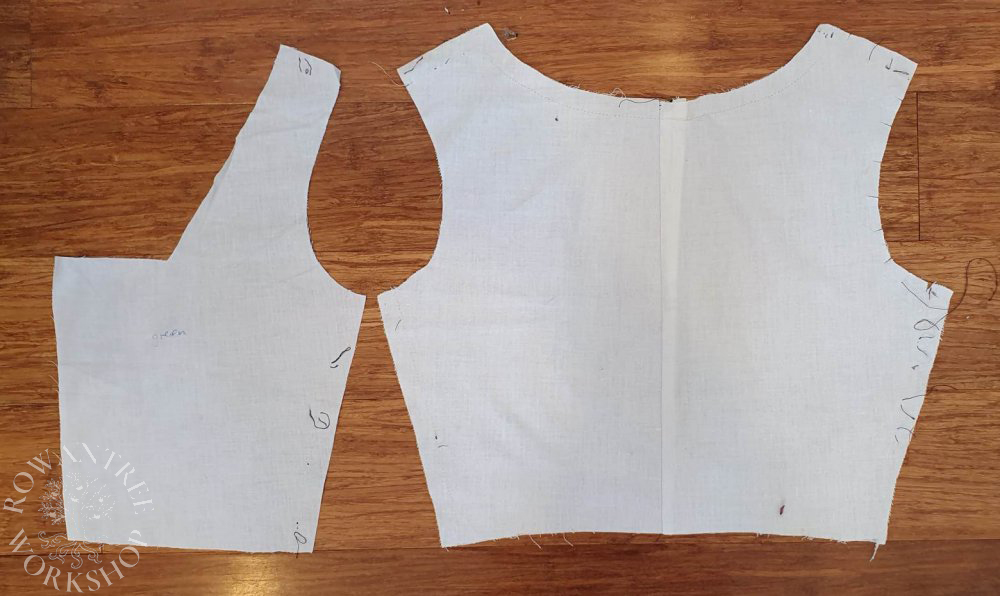
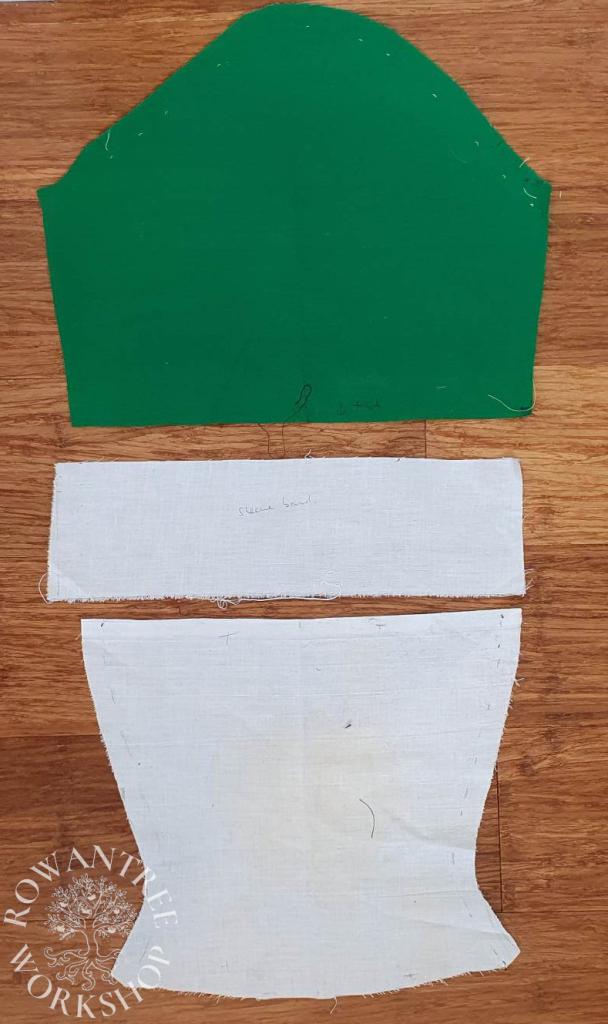
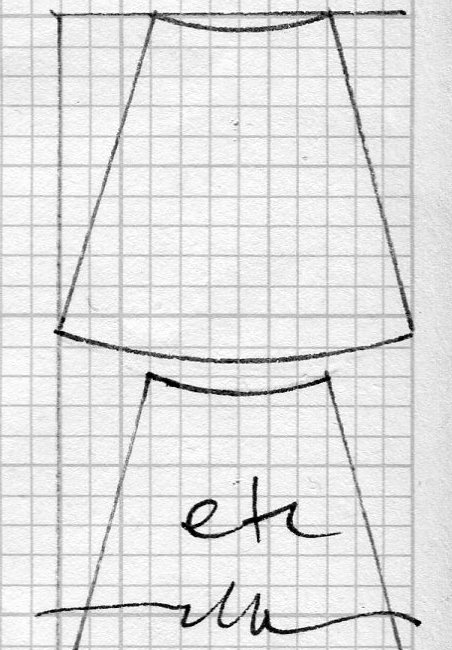
I cut the bodice from the linen, plus an interlining in heavy cotton twill and sewed the main seams.
Using the bodice pattern, I cut matching guarding in black velveteen and basted this along the neckline. I bag-lined the bodice in black linen, under-stitching the neckline so the lining would not show and leaving the waist open. I measured out from the neck to get the width right, then turned the hem of the guard and sewed it in place.
I left the neckline ribbon ‘echo’ for later, but sewed on the guard and ribbon on the front of the bodice..
For the sleeves, I sewed long tubes of the linen, turned and pressed them and then cut to size for the connecting strips. I made up the arm and cuff sections, pinned on the strips, tried the sleeve on to test and then sewed it all together.
Then I applied the decoration, being careful with the spacing. Finally, I lined the arm and cuff sections, then sewed the finished sleeves into the bodice armscye, and hand-stitched the lining . Finally, I sewed on the black ribbon below the neckline guarding hiding the top of the sleeve.
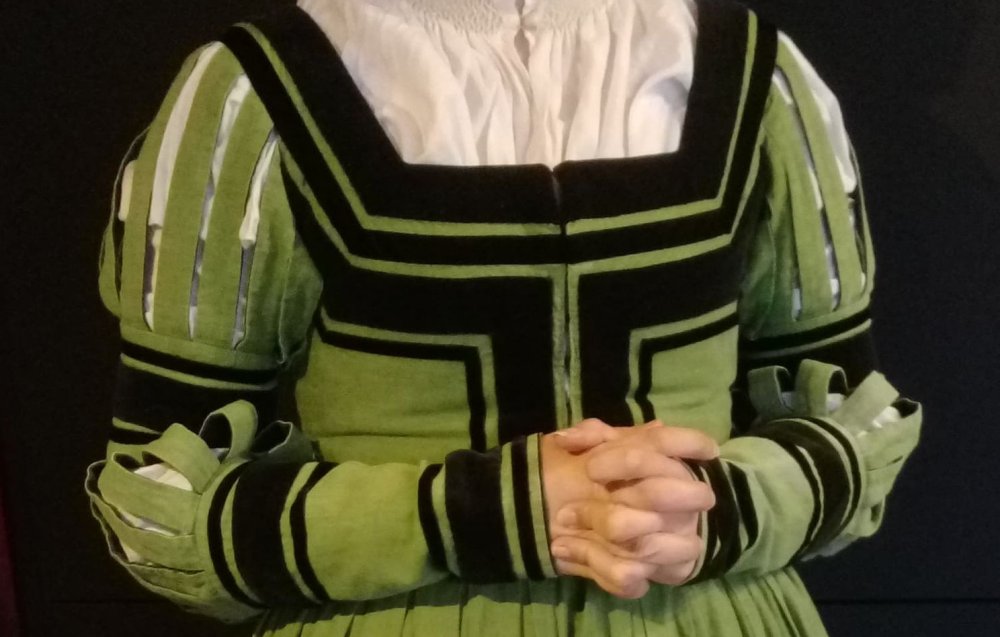
I made up the skirt, sewing the side seams and then trimming the hem to a smooth curve. I used this to make a pattern for the wide black guarding, so I could match the curve. I, cut this out in several sections and sewed together into a long arced strip, turned and pressed the long hems.
I sewed the hem guard and matching ribbons on by machine – this gown has so many meters of guarding to apply! Then I lined the hem of the skirt in black linen to hide all the work. I box pleated the skirt into the bodice and sewed down the lining.
To close the bodice front, I made up pair of lacing strips in heavy twill with metal eyelets, and sewed these into the bodice lining and interlining – this would take the strain. I sewed a series of hooks and eyes along the front opening, to close it neatly, hiding the lacing.
Finally, I made up a simple petticoat in pink linen, with straight panels, cartridge-pleated onto a waistband. I machine-sewed 4 rows of black cord around the hemline, to match the Holbein sketch, hiding the ends in the seam.
I was so pleased with the result! It looked very like the image in the window, fitted well and felt comfortable. I made the matching headwear and wore the outfit for many years.
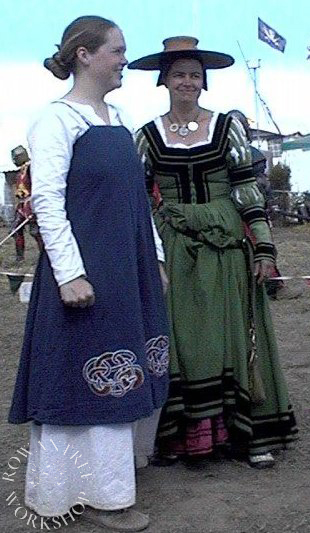
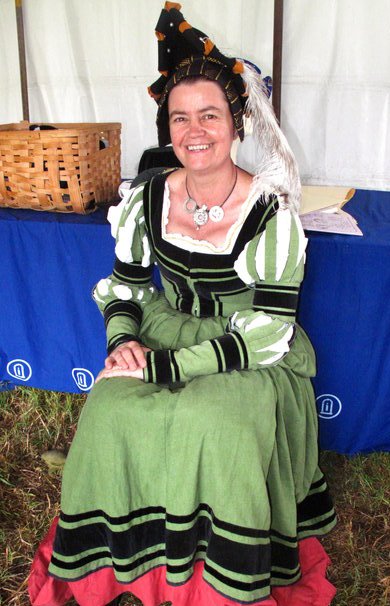
Afterthoughts
Although I would use very different construction methods now, looking back over the decades, still think this is a good looking Rock and I am proud of the work done by my younger self.
In 2021, I did a major wardrobe cull to remove items that no longer fit, including this old favourite. I was pleased when it found a new home with my friend Mikhaila.
